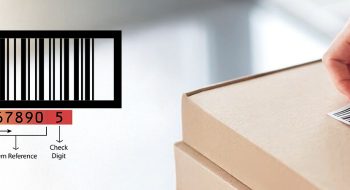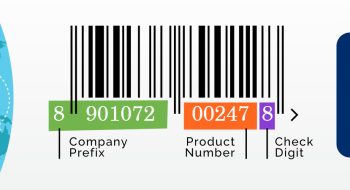In recent decades, barcodes have been leveraged in both the brick-and-mortar and e-commerce industries. The barcode encodes a unique identification number, which is issued and maintained by GS1, a global supply chain standards organization present in 115 countries globally. With Global Trade Identity Number (GTIN), GS1 provides unique product identification that brings efficiency to various supply chain and retail processes.
Barcoding is a fundamental building block for creating an infrastructure that is used across various supply chains, be it warehouse management, quality control, or product tracking till it reaches the final customer. With GTIN becoming a need with the evolving e-commerce system, the database that it creates has upsurged data analytics for gaining business insights. Listing the product with barcode number on an e-commerce website or any other marketplace makes the process much more convenient.
However, if you don’t have a barcode, can you still launch your product in the market? Yes, of course. In this post, we have addressed this question, which has gained prominent traction, especially from local manufacturers selling handicrafts, artifacts, and homemade products, who think barcoding costs are significantly higher owing to their low business turnover.
The necessity of GTINs depends upon the product category. Though many products can be sold through e-commerce platforms without GTINs, there are a few categories for which GTINs are mandatory. Big marketplaces such as Amazon, and Flipkart ask for GTIN to list your product on their platform; however, if you do not have it, they also provide an alternative for launching your products. While it is possible to launch your product without a barcode, the alternatives depend upon the product category and the associated brand. Let us have a look at how you can launch your product without a barcode.
-
If the Product category is already listed on Amazon: If the category for your product already exists on their site, you don’t require a GTIN to launch your product. You can link your product with Amazon Standard Identification Number (ASIN) by using it as your product ID.
ASIN is a unique identity given by Amazon to almost all the products listed on Amazon for its identification.
-
If the product category does not exist: If your product does not fit into the existing categories, you can apply for a GTIN (EAN/UPC) exemption through their seller central login page. This is ideal when your product is homemade and non-branded and if you are selling products or a combination of products (Bundles) having no GTINs (barcode numbers). GTIN exemption can be done with and without a brand registry.Having a brand registry does not give you a GTIN exemption but having a GTIN exemption can allow you to launch your product without a brand registry. You will be required to choose a product category and name the brand for your product. Further, you will need to produce a brand support letter authorizing your product and confirmation that it does not have a GTIN.GTIN (EAN/UPC) exemption does not offer a lifetime of validity for your product to be listed on the platform, and you have to reapply for it after every month. The process of GTIN (EAN/UPC) exemption itself is very slow, and you can expect a request completion time of 30 days.
Hence, to save yourself from these hassles, it is recommended for every entrepreneur or potential entrepreneur/business while launching their products should have GTINs in place as it saves companies money while improving quality, on-time performance, and other key business factors.









